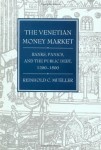[Panics] Videos
In 1985, Frederic C. Lane and Reinhold C. Mueller published the magisterial Money and Banking in Medieval and Renaissance Venice, Volume 1: Coins and Moneys of Account. Now, after ten years of further research and writing, Reinhold Mueller completes the work that he and the late Frederic Lane began.
The history of money and banking in Venice is crucial to an understanding of European economic history. Because of its strategic location between East and West, Venice rapidly rose to a position of preeminence in Mediterranean trade. To keep trade moving and credit available from London to Constantinople and beyond, Venetian merchants and bankers created specialized financial institutions to serve private entrepreneurs and public administrators: deposit banks, foreign exchange banks, the grain office, and a bureau of the public debt. This new volume clarifies Venice’s pivotal role in Italian and international banking and finance. It also sets banking–and panics–in the context of more generalized and recurrent crises involving territorial wars, competition for markets, and debates over interest rates and the question of usury.
“The single aspect that most characterizes Venetian history and historiography is the dominant role of the state in the life of the city and the symbiosis between public and private sectors of the economy, between public and private interests….A primary concern of civil authorities was to create an atmosphere of competitive opportunity on the Rialto conducive to investment, that is, to the influx of money and goods, their turnover in Venice, and their eventual outflow.”–From The Venetian Money Market

